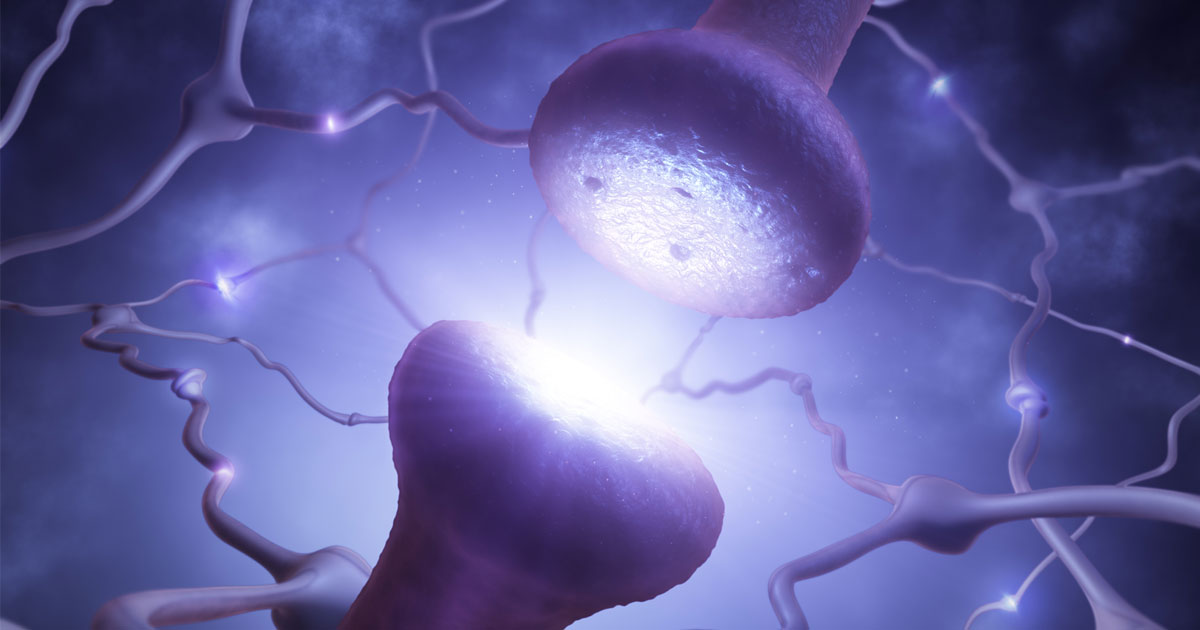Addiction affects the lives of many Americans every year. In fact, roughly 60% of Americans 12 years and older are experiencing substance use issues when you include alcohol, tobacco, and other illicit substances. [1]NCDAS (2022). Substance Abuse and Addiction Statistics [2022]. National Center for Drug Abuse Statistics.Retrieved June 1, 2022, from https://drugabusestatistics.org/ If you consider the sheer number of loved ones affected by drug abuse, it is possible that every household in the U.S. has been impacted in some way by substance abuse issues.
While these numbers are somewhat disturbing, understanding how it happens is important. Studying what addiction is and why humans become addicted helps us better understand the root of the problem and may eventually give us answers on how to solve these issues.
What Is Addiction?
Addiction is an issue with which countless individuals suffer every year. Addiction is a complicated concern and is influenced by multiple circumstances. It is extremely important to note that addiction is not the result of just one factor, like socioeconomic status, mental health disorders, or genetics. More often, it is generated by several of these factors simultaneously. Often, though not always, people suffering from addiction also have a co-occurring mental health disorder.
Addiction is a chronic medical condition that can be treated. It is a condition in which a person continues a behavior or using a substance and is unable to discontinue usage even though they are suffering physical, psychological, and emotional damage from said substance. Addiction involves not only genetics but potentially also brain chemistry, environment, and life experiences.[2]American Society of Addiction Medicine (2019). What is the Definition of Addiction? Glossary of Addiction. Retrieved June 2, 2022, from https://www.asam.org/quality-care/definition-of-addiction
Addiction and Misuse
Addiction and substance abuse or misuse, fall into two different categories. As previously defined, addiction is when the substance or activity becomes a compulsion for the individual. Misuse happens when a substance is used at an extreme rate or in a situation that is inappropriate and causes harm to the user. Misuse isn’t a compulsion but is often a choice that the individual makes. Misuse doesn’t always lead to addiction.
The misuse of prescription drugs may lead to addiction, but because of the stigma surrounding addiction and addiction treatment, many people suffer for a long time before seeking help – if they seek help at all. These impulses become uncontrollable, or compulsive, and they continue even though the harm is being caused to the individual.
Often, those with addiction issues start voluntarily using a drug or participating in an activity, but then they feel compelled to continue. The defining elements of addiction include loss of control, temporary satiation, excessive thoughts about the behavior, and negative consequences. [3]Sussman, S., & Sussman, A. N. (2011). Considering the definition of addiction. International journal of environmental research and public health, 8 (10), 4025–4038. … Continue reading
Why Do Humans Become Addicted?
There is no one set of circumstances that defines how people become addicted—people become addicted in different ways. Whether they come to rely on the substance because of their environment, their life experience, or both, each person has their own determining factors. However, the common link in addiction is the increased development of dopamine in the user’s brain.
The biology of addiction is related to dopamine. Dopamine is one of the messenger cells in the brain that helps send messages to other parts of the brain. It’s a chemical that lets humans feel pleasure, motivation, and satisfaction.
It also helps a number of other systems functions, including:
- Sleep
- Learning
- Lactation
- Attention
- Mood
- Blood vessel function
- Blood vessel function
- Pain processing
- Movement
Dopamine produces those pleasurable feelings you experience after exercising or while spending time with loved ones. This makes you feel good and makes you want to repeat these things so you can prolong or experience the good feeling again. Unfortunately, substances can do this much more efficiently.
Certain drugs affect the dopamine reward system in various ways. Cocaine, for example, is a stimulant and can prolong those good feelings from dopamine. Other substances like heroin can convince other neurotransmitters to release dopamine in the brain, creating that feeling of euphoria. Regardless of the type of substance, those who habitually use substances often begin failing to create dopamine on their own. This can cause them to lose interest in the activities that were once pleasurable, either because they can create that experience without the activity or because their brain simply fails to produce the usual dopamine. [5]Wise, R. A.Robble, M. A. (2020, January). Dopamine and Addiction. Annual Reviews of Psychology (71)<79-106.Retrieved June 2, 2022, from … Continue reading
How Do You Know You Are Addicted?
During prolonged substance use, the brain is changed in several ways. It adjusts to the new fluctuations of chemicals by naturally producing fewer of those chemicals. Thus, the individual will want to consume more and more of the substance to continue to produce that euphoric feeling. Addiction sets in when the desire to consume more occurs continuously, and the individual experiences withdrawal if they don’t get the desired amount of the substance. This creates a nasty cycle that can be extremely difficult to break.
Addiction is clinically referred to as substance use disorder, or SUD. This condition is diagnosed based on criteria that determine the level of a person’s substance use disorder. If a person exhibits less than two of these symptoms, they aren’t considered to have substance use disorder. If someone meets two or three of the criteria, they are classified to have a mild substance use disorder. A moderate substance use disorder would be characterized by meeting four of five of the criteria, and meeting six or more of the criteria is considered a severe case of substance use disorder.
The eleven substance use disorder criteria are as follows:
- Using more of a substance or continuing usage after is intended or prescribed
- Inability to cut down on substance usage, even if the desire to exists
- An increase in the amount of time acquiring, using, and recovering from the usage of the substance
- Existing urges or cravings to use the substance
- Using the substance makes you unable to complete necessary school, work, or home tasks
- Although the substance is negatively affecting relationships, usage continues
- Substance use causes the user to let go of recreational, social, or occupational activities
- Although the substance creates danger for the user, usage continues
- Although the substance is causing psychological and/or physical issues, usage continues
- Building up a tolerance to the substance or requiring larger amounts of the substance to obtain desired results
- Withdrawal symptoms occur when the substance isn’t used and go away when the substance is used
Disorders Related to Addiction
Because nature and humans have created a wide variety of substances, each substance use disorder is unique. There are currently 10 different substance use disorders recognized by the DSM-5.
Opioid Use Disorder
Opioid use disorder is typified by the chronic consumption of opioids. This usage causes significant negative impacts to the user. At least 2 million people in the United States are affected by opioid use disorder. [6]Chang HY, Kharrazi H, Bodycombe D, Weiner JP, Alexander GC., (2018). Healthcare costs and utilization associated with high-risk prescription opioid use: a retrospective cohort study. BMC Med 16 (1), … Continue reading
Marijuana Use Disorder
With the legalization of marijuana in many states, the use of the substance is growing. Though it has been suggested that marijuana may not fit in with the description of most substances, it is still possible to gain an addiction or dependence on marijuana. Long-term, excessive use of marijuana can lead to memory loss, and it may also negatively affect the lungs of those who smoke it. Withdrawal symptoms might include difficulty sleeping, irritability, and restlessness.
Nicotine Use Disorder
While nicotine doesn’t cause traditional symptoms of impairment, a person can still become dependent and addicted to the substance. Because consumption of nicotine quickly creates the rush of dopamine that enables the pathway to addiction, it is a substance to which people can easily become addicted. Nicotine consumption is often triggered by certain habits for people, such as after meals, while drinking, or when feeling stressed or anxious.
Stimulant Use Disorder
The usage of stimulants does a number of things to the body that would make them attractive: increased attention, energy, and alertness. Drugs such as cocaine, MDMA, methamphetamine, and Adderall fall under this category. Those who are coming down from the effects of stimulants may experience insomnia and anxiety, while withdrawal symptoms include mood swings, headaches, and hallucinations.
Sedative Use Disorder
Sedative use disorder is often seen in conjunction with the use of other drugs. Sedatives are frequently used to counteract the effects of certain other drugs so that the user can come down from a high. The usage of sedatives has been linked to memory issues as well as depression. Often, those with sedative use disorder also have a hereditary trait called behavioral disinhibition. This means that they have a draw to rule-breaking, dangerous forms of risk-taking, and impulsiveness.
Hallucinogen Use Disorder
Hallucinogens offer altered consciousness for a limited time. While users may not experience withdrawal symptoms from hallucinogens, those with hallucinogen use disorder may experience aggression and agitation or psychotic symptoms in addition to the psychedelic effects.
Alcohol Use Disorder
This disorder is defined by the inability to discontinue use, even though harm is being done to an individual’s social life, health, or occupation. This means a person suffering from alcohol use disorder is unable to know when or how to stop drinking. Some of the different symptoms involved include stashing alcohol in strange places, feeling an urge to drink, and private, solitary, or secretive drinking.
Co-Occurring Disorders
While not every person suffering from a substance use disorder is also suffering from a mental health disorder, roughly 20% of the population with addictive disorders also has some category of mood disorder. [7]Flynn, P. M., & Brown, B. S. (2008). Co-occurring disorders in substance abuse treatment: issues and prospects. Journal of substance abuse treatment, 34 (1), 36–47. … Continue reading Co-occurring disorders occur when an individual experiences coinciding substance use disorders and mental health disorders.
It is also true that those with co-occurring disorders are at a higher risk for other issues like social isolation, relapses, family issues, homelessness, and incarceration.
According to the National Institute of Mental Health, those mental health conditions that coexist with substance use disorder include:
- Depressive disorders
- Anxiety disorders
- Bipolar disorders
- ADHD
- Personality disorders
- Schizophrenia
There’s not a clear pathway from one disorder to the other. Some of those people with mental health disorders may come to rely on drugs or alcohol to deal with their mental health problems, while those with substance use disorders may develop certain instances of mental health disorders over time. Neither disorder causes the other disorder to exist within individuals, but rather, a genetic history of either disorder may contribute.
What Are the Options For Someone With Addiction?
Treatment options can be complicated for someone suffering from addiction. Addiction is a chronic illness from which someone can’t simply be cured with a single treatment. Often, treatment requires a long-term approach or multiple attempts from the individual. For those with co-occurring disorders, the situation is much more complex.
Traditional addiction treatment typically focuses on three factors: discontinuing substance use, staying sober, and learning to become productive in society, as well as with loved ones and work. Both inpatient and outpatient treatment programs may be effective, and those may also employ the use of holistic and non-traditional methods.
In order for any treatment program to work, however, a number of conditions must exist, including:
- Easy access to treatment
- Ability to address co-occurring disorders, not just substance use disorder
- Continuing treatment for as long as necessary
- Behavioral therapy and counseling
- Ability to adjust treatment as necessary to suit patient’s needs
Seeking Help
A person suffering from addiction doesn’t have to struggle alone. While views of addiction and the terminology that describes it may continue to change and evolve, with better knowledge will come better treatment options. [8]Kranzler, H. R., & Li, T. K. (2008). What is addiction?. Alcohol Research & Health: The Journal of the National Institute on Alcohol Abuse and Alcoholism, 31(2), 93–95. Retrieved June 2, … Continue reading With the right tools and approaches, treatment can be very effective for every individual.

CADC II, Certified AOD Counselor
Nora Jenkins has made the quality and committed care we provide at Lilac Recovery Center possible. Nora is experienced in providing care to assist in rebuilding relationships to support healthy, long-term recovery. Her professional background includes clinical management, program administration, and counseling.
References[+]
| ↑1 | NCDAS (2022). Substance Abuse and Addiction Statistics [2022]. National Center for Drug Abuse Statistics.Retrieved June 1, 2022, from https://drugabusestatistics.org/ |
|---|---|
| ↑2 | American Society of Addiction Medicine (2019). What is the Definition of Addiction? Glossary of Addiction. Retrieved June 2, 2022, from https://www.asam.org/quality-care/definition-of-addiction |
| ↑3 | Sussman, S., & Sussman, A. N. (2011). Considering the definition of addiction. International journal of environmental research and public health, 8 (10), 4025–4038. https://doi.org/10.3390/ijerph8104025 |
| ↑4 | Remington, G., Agid, O. Foussias, G. (2011) Schizophrenia as a disorder of too little dopamine: implications for symptoms and treatment, Expert Review of Neurotherapeutics, 114, 589-607. https://doi.org/10.1586/ern.10.191 |
| ↑5 | Wise, R. A.Robble, M. A. (2020, January). Dopamine and Addiction. Annual Reviews of Psychology (71)<79-106.Retrieved June 2, 2022, from https://www.annualreviews.org/doi/full/10.1146/annurev-psych-010418-103337#_i3 |
| ↑6 | Chang HY, Kharrazi H, Bodycombe D, Weiner JP, Alexander GC., (2018). Healthcare costs and utilization associated with high-risk prescription opioid use: a retrospective cohort study. BMC Med 16 (1), 69. https://doi.org/10.1186/s12916-018-1058-y |
| ↑7 | Flynn, P. M., & Brown, B. S. (2008). Co-occurring disorders in substance abuse treatment: issues and prospects. Journal of substance abuse treatment, 34 (1), 36–47. https://doi.org/10.1016/j.jsat.2006.11.013 |
| ↑8 | Kranzler, H. R., & Li, T. K. (2008). What is addiction?. Alcohol Research & Health: The Journal of the National Institute on Alcohol Abuse and Alcoholism, 31(2), 93–95. Retrieved June 2, 2022, from https://www.ncbi.nlm.nih.gov/pmc/articles/PMC3860451/ |




